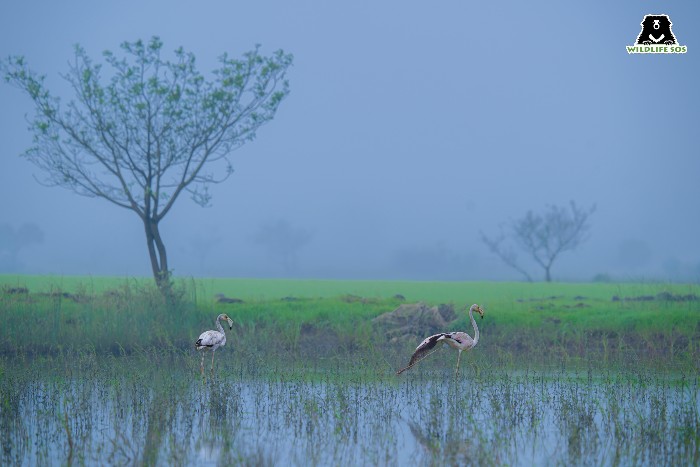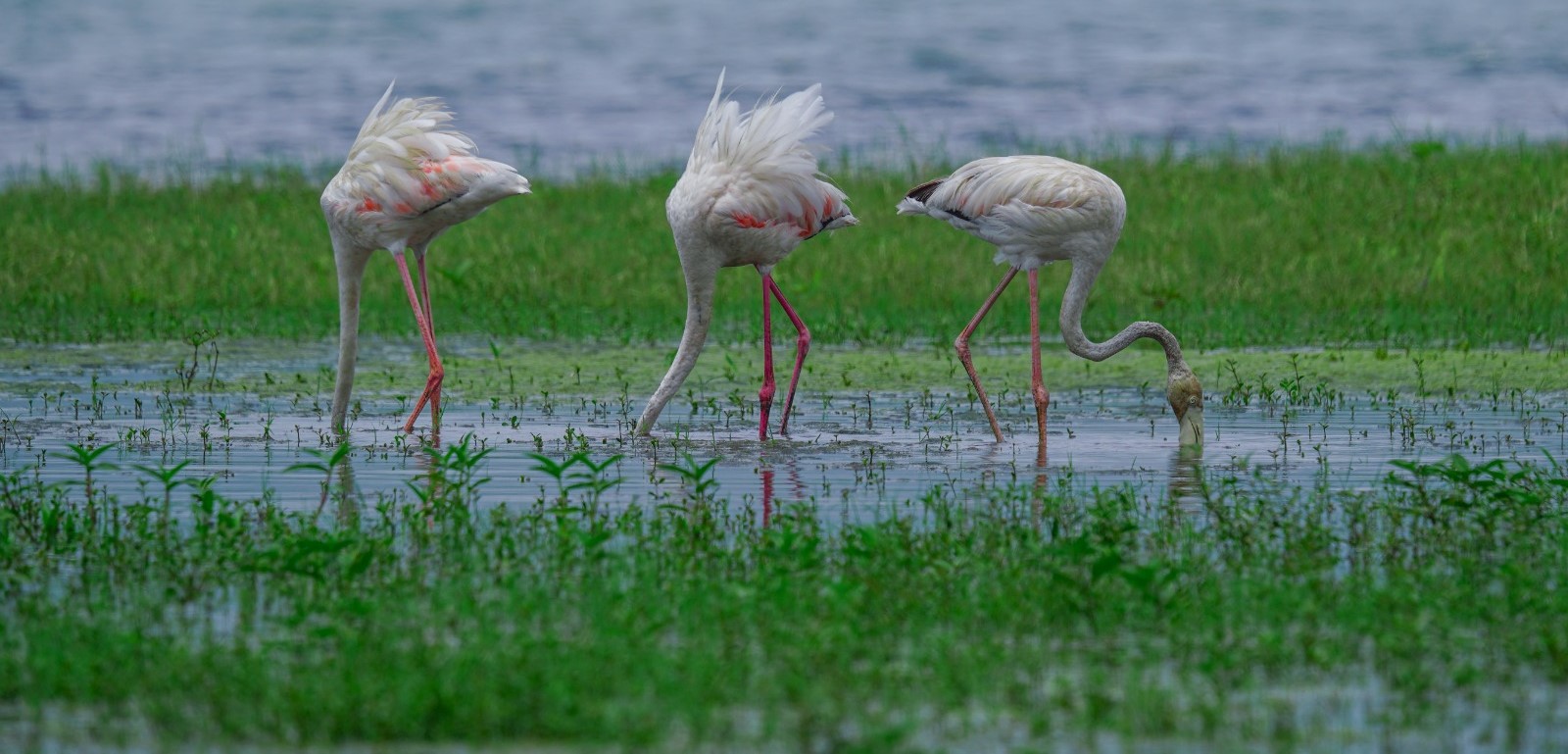Wildlife SOS introduces a new series “Things You Didn’t Know About” that explores fascinating and lesser-known facts about various species. Our writers will spotlight one inhabitant of the wild, unveiling its unique characteristics and roles in the ecosystem. In this feature, we focus on one of the most enchanting and iconic bird species — flamingos.
One of the most recognisable and attractive birds in the world, flamingos can be distinguished by their elegant one-legged posture and the iconic pink plumage. Currently, there are six species found in the world, out of which, four are found throughout the Americas (including the Caribbean) and two species are native to Afro-Eurasia. These include – greater flamingo, American flamingo, Chilean flamingo, lesser flamingo, Andean flamingo, and James’s flamingo.
These flamboyant birds are full of surprises! Here are five facts about flamingos that are lesser known, but can surely increase our admiration for them!

1. Flamingos aren’t naturally pink!
One of the most recognisable traits and features of these majestic birds is their bright pink colour! But did you know that they are not born this way? During their birth, Flamingos are naturally grey. The saying “you are what you eat” is absolutely true for these birds as they get their pink colour from their diet. They primarily eat shrimp and algae that contain carotenoid pigments, which is what makes their feathers bright pink!

2. They are masters of balance!
Flamingos are very well-known for their ability to stand on one leg, but there’s so much more behind this behaviour. Standing on one leg is a way to tuck the leg closer to the torso that minimises heat loss, helping the bird to conserve body heat. Studies have noted that this also allows these birds to spend long hours in water even when the weather becomes cold. Another reason for the bird to do this is to reduce muscle fatigue, as standing on one leg is less tiring than standing on two. Flamingos are surprisingly comfortable standing on one leg, and oftentimes also fall asleep in the same position!

3. Flamingos are social birds
Flamingos are extremely social avians and thrive in large colonies, sometimes numbering in tens of thousands. A group of flamingos is called a “flamboyance”, and hundreds of them can be seen flying in flocks together. Living in groups not only helps them form social bonds, but also in finding food and protecting them from predators.
In colonies, these birds have also been observed performing a coordinated courtship dance that includes movements such as wing-salute and head-flagging. Both involve stretching of their necks while they are in water, however for the former, they spread their wings, and the latter has them turning their heads from side to side together in a pattern.

4. Flamingos are pros at filtering their food!
Flamingos have unique beaks that help them in filtering their food out from water. The remarkably huge beaks can strain out algae and small crustaceans (invertebrate animals) when these birds place their beaks upside-down in the water. Here’s what happens: when the bird moves its immersed beak around, it takes in both water and food into its mouth, however, there are hair-like structures called lamellae that line its beak. These act like an inbuilt sieve to secure the food, while the tongue pushes all the water and mud out!

5. Flamingos produce “crop milk” for their young ones
Both the parents produce a certain fluid called “crop milk” to feed their young ones. But unlike milk, this liquid is red in colour and is produced by glands in their crop, which is the muscular pouch of their throat. The crop is a part of the upper digestive tract, and these birds regurgitate the secretion from here. Crop milk is highly rich in fat and protein, which ensures the healthy growth of the young ones.

Other than being beautiful, stunning birds, flamingos are amazing avians with distinctive adaptations and behaviours. From their diet-driven colouring to how they maintain their social bonds, flamingo facts are truly fascinating!
To read more of such interesting articles on wildlife, subscribe to our newsletter.





